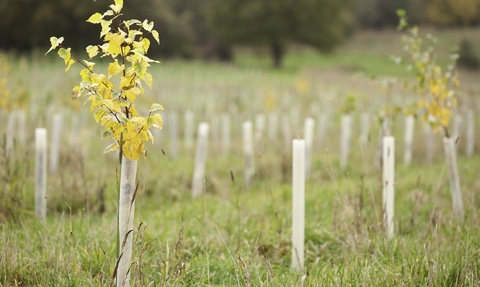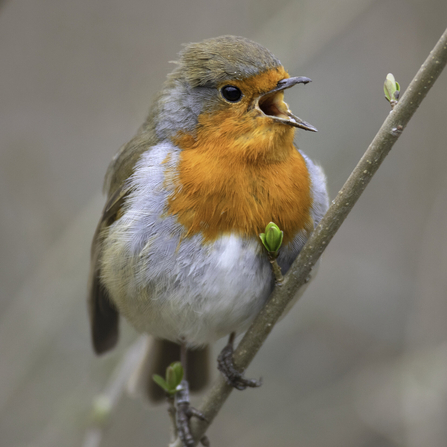
Ross Hoddinott/2020VISION
Microforests
What are microforests?
Microforests are small areas densely planted with native trees. They can be in parks, roadsides, school grounds or any open space in built-up areas.
Within a few years, they will be alive with songbirds, blossom and berries!

Robin
Jon Hawkins – Surrey Hills Photography
Manx Wildlife Trust will plant new Microforests around the Island’s communities in coming years. Our first microforest was planted in 2021 in the New Ballakilley Park in Rushen in collaboration with Microgaming.
The video below shows Andree, MWT Conservation Officer, explaining more about how the Microforest planted with Microgaming will work.
Microgaming Mircoforest (https://youtu.be/Qu-qo0QBb0w)
Andree explains more about how Microgaming's microforest will work
Creating a microforest
To create your own microforest, you will need a piece of land the size of a tennis court, approximately 260m2 is ideal.
Microforests are versatile, they can fit into schoolgrounds, parks, road verges, business premises, some gardens, churchyards and public open spaces.
Manx Wildlife Trust (MWT) will help you through the whole process, you just need to provide the site and the funding. You will also need a group of enthusiastic tree planters!
How to organise a microforest
A 260m2 microforest normally costs £1,500*
This includes:
• Carefully selected native trees
• Planning and design
• Advice
• Professional help with community planting days
Once planted, the microforest will be yours to love and care for, with MWT available for advice if needed.
Microforests can be adapted to fit your needs. For example: without thorny plants if areas are needed for children’s den building, play or nature study.
*Additional costs can arise from increasing size, tree protection if there are rabbits onsite and weed suppression. Please contact us to discuss.
What to expect
Once we have assessed your land and agreed a plan with you, all that’s needed are spades, people and trees. And we provide the trees!
Tree planting is really simple and a suitable activity for people of all ages to take part in. Depending on the number of volunteers, the microforest can be planted in just one day.
Tree planting generally takes place from October to March and procuring young trees can often take time, so get in touch early to avoid disappointment.
How to get started
If you want to plant your own microforest and think you have a suitable piece of land, get in touch by email at enquiries@mwt.im or call us on 844 432.

Spiny squat lobster
A bizarre half lobster/half crab, this squat lobster is one of the true stunners of the rocky shore!

Green-leaf worm
This vibrant green worm is arguably the most attractive worm found on the rocky shore!

Solar powered sea slug
This remarkable creature shows nature’s fantastic complexity!
